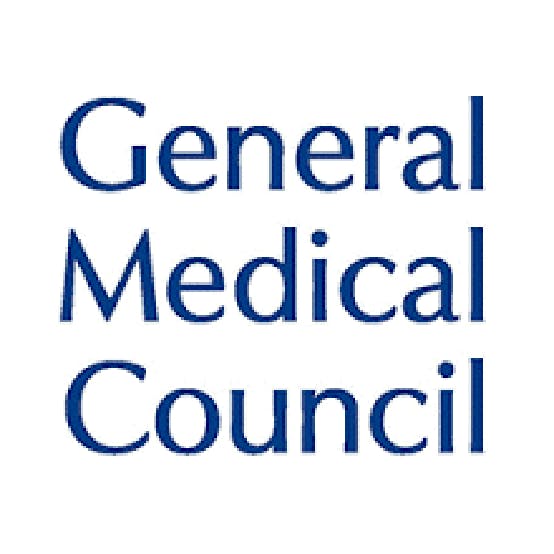Creating A Safe Space For LGBTQIA+ Patients

One of the aspects we cover in our 10 Tips for Marketing Your Aesthetics Practice is making your messaging inclusive. Ensuring people know they are welcome in your clinic by reflecting them in your imagery, is a great first step, but words matter too.

When we consider LGBTQIA+ patients – lesbian, gay, bisexual, transgender, queer, intersex and asexual, as well as all additional genders and non-gender conforming individuals – there are further steps you can take to ensure this often underserved community knows they are welcomed by you and your business.
Let’s look at one simple step you can take now to help your aesthetics practice become a safe space for LGBT+ patients.
Understanding and using the correct terminology
Truly understanding the correct terminology for various LGBT+ identities is vital for an authentic, respectful relationship with your patients. Furthermore, it's crucial to know when and how to use the terms you learn.
Take the time to get to know more about the terms used so patients feel better understood when talking to you. This basic show of empathy can go a long way in demonstrating to patients of all genders that you’re not just paying lip service when you say your aesthetics clinic is a safe space for them.
The Instagram account So You Want To Talk About… has published an excellent glossary of LGBTQIA+ terms.
They note, “Equipping yourself with knowledge, especially when it comes to terms and knowing how to use them correctly, is important in helping the LGBTQIA+ community to feel seen and safe. The following glossary of terms was compiled with content sourced from R29 x GLAAD’s ‘Gender Nation Glossary’ as well as the It Gets Better Project”.
Below we have highlighted their explanations of a few of the more commonly used terms but we highly recommend you read their quick and easy guide in full.

Assumed gender
“The gender a person is assumed to be by society, based on their sex assigned at birth and/or their gender presentation.”
Cisgender
“A term used by some to describe people who are not transgender. ‘Cis-’ is a Latin prefix meaning ‘on the same side as’ and is, therefore, an antonym of ‘trans-’. A more widely understood way to describe people who are not transgender is simply to say ‘non-transgender people’.”
For example, a person assigned a male sex at birth and has a male gender identity could be referred to as a “cis-male”.
Gender expression
“External manifestations of gender, expressed through a person’s name, pronouns, clothing, haircut, behaviour, voice, or body characteristics.”
Misgender
“When someone uses the wrong pronoun or term to refer to a person, such as calling a transgender boy ‘her’ or a transgender girl ‘him’.”
Nonbinary
“A person whose gender identity does not conform to the gender binary, which is the erroneous idea that only two distinct and opposite genders exist – male and female. In reality, many genders exist (see Gender Non-Conforming). Some non-binary people identify more with one gender, while others don’t identify with any. There are many ways to be nonbinary and everyone’s experience with gender is different.”
Passing
“Refers to the ability of an LGBTQIA+ person to go out into society and be assumed to be either straight or cisgender. Feminine queer women, for example, often pass for straight and transgender people may pass for cisgender at some point after their transition.”
Injectables can play an important role in helping patients “pass”. Learning more about this, including how aesthetics treatments can be used for facial feminisation and facial masculinisation, is recommended.
Each patient will require their own tailored approach, however, these will likely involve the same types of treatments in terms of cosmetic injectables – toxin and fillers – as well as cosmetic dermatology treatments to help the condition of the skin. As such, you could consider putting together special facial feminisation and masculinisation treatment menus to demonstrate your abilities in and understanding of this area.
Transgender
“Someone whose gender identity differs from the one that was assigned to them at birth. Many transgender people identify as either male or female, while others may see transgender as an umbrella term and identify as gender non-conforming or queer. How transgender people choose to express their gender is individualistic, as is their transition.”
Male to female
“A term used to talk about transgender women, who were assigned male at birth and have since transitioned to female. Also seen as MTF.”
Female to male
“A term used to talk about transgender men, who were assigned female at birth and have since transitioned to male. Also seen as FTM.”
Transition
“The process through which some transgender people change their gender expression to more closely resemble how they view their gender identity. This can include personal, medical and legal steps, such as: using a different name and pronouns; dressing differently; changing one’s name and/or sex on legal documents; hormone therapy; or gender affirmation surgery. Some transgender people may choose not to make these changes, or may only make a few. The experience is an individualistic one; there is no right or wrong way to transition.”
For transgender patients looking to “pass” as their preferred gender, injectables can play a huge role. Many do not have access to costly surgical procedures – and the associated downtime – which can help give their faces a more feminine or masculine look. As such, toxin and filler treatments which help with this can be especially popular with transgender patients as part of their transition.
Dead name
“The name given to a transgender person at birth, which they often change when they transition.”
Always refer to patients by their preferred name and pronouns, it’s considered insulting to “dead name” someone by using their previous name.
Treating trans and non-binary aesthetics patients
Cosmetic injectables can be a life-changing part of gender-affirming care for some people. Transgender men and women can use filler treatments to feminise or masculinise their appearance, to a way they feel better represents their identity. Non-binary individuals can also seek injectables for the same reason, though are more likely to require a mix of masculinisation and feminisation approaches, rather than one or the other.
That said, there are no rules here - everyone's desired appearance is their own choice. As a responsible and ethical aesthetic practitioner, you can certainly guide them and give them a good idea as to which treatments may help them to achieve their goals. However, try not to project your beauty ideals onto any patients - actively listen to what they're seeking then work together to determine how best to get them to that point.
Being able to truly impact this community through your medical skills and artistic flair, can be an incredibly rewarding experience.
Brush up on your masculinisation and feminisation filler techniques
To best serve this patient cohort - as well as your cisgendered patients! - it's important to sharpen your masculinisation and feminisation filler techniques.
You can find out more about Treating Non-Binary Aesthetics Patients in our previous article on this. Additional information on face shapes, ethnicities and gender - all key points when putting a tailored treatment plan together, can also be found in the Aesthetic Medicine Articles section of our website.
These techniques are taught during all our botox and filler courses and can be further honed through our Injectables Masterclasses.
Don't be afraid to get it wrong
We hope you find this guide insightful and helpful in creating a safe space for LGBTQIA+ patients. Always follow your patient’s lead and listen to how they refer to themselves and their goals.
One thing we would advise is not to be afraid of getting it wrong. Don’t let that fear put you off trying. If you approach patients with respect and empathy and explain that you are still learning, it should go a long way towards building a good and hopefully long-standing patient relationship.
All information correct at the time of publication












